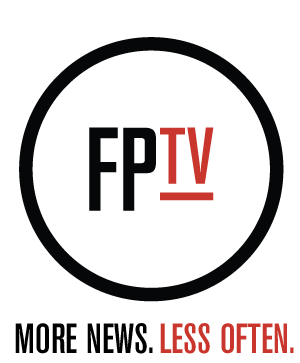Audio Meets Visual: Retrospective
Visual media always achieves its greatest impact through the expert use of sound. While little has changed regarding when a sound is properly added to an image, much has changed regarding the process that consummates this union.
The state of pro and consumer technology allows computer users to weave sound effects with the digital precision of audio engineers while maintaining a certain artistic vision. Whims and ideas can be composed, erased, modified as needed.
In the past audio editing by DJs was performed by slicing tape with a razor, but editing on a computer allows you to see the sound. The sine wave that is the audio dynamic range has peaks and valleys. Finding those dimensions in the sound can be difficult as modern methods of compression reduce the wave to a flat line.
“Everything’s on computer, so fast, so intensive. Tape machines are dinosaurs,” points out Steve Kelly of Bill Young Productions. BYP supplies ads for all media as well as serving the concert and touring industry. The company utilizes DAWs or Digital Audio Workstations using Digidesign Pro Tools.
Kelly recalls the switch from tape machines to computers. In the Twentieth Century BYP was the largest small package customer of Federal Express in Houston. The main switch to systems that handle the current workload was about fifteen years ago. Today instead of shipping out tape and video to radio and television stations the files (high res images) are sent via email. The file size rarely exceeds 1 MB. “Digital audio sped everything up ten-fold. Quality is incredible,” only Kelly notes that the sound lacks “warmth like tape.”
Not that that presents a problem when Pro Tools has plug-ins to simulate warmth, or even “add tracking vinyl noise.” So is compression a double edged sword? “Sound is like clay, you can mold it, do anything you want,” said Kelly.
Wild Blue Pictures also uses Pro Tools as part of its series of Avid Editing Suites. Wild Blue’s tools include Discreet Flame, a high performance digital system, and boasts Houston’s best 35mm screening room. The auditorium doubles as an ADR room with a portable sound console that rolls out from the wall. The projection room includes interlock projectors to run separate audio and film reels.
While Texas attracts its share of feature films most of that take place in Austin and Dallas, Houston hosts major films every couple of years. Wild Blue President Bill Moore mentioned that the last real use of the screening room by a studio motion picture was Arlington Road (1999) and Rushmore (1998). A lifetime ago in dog years.
Both titles were modest budgeted films by Hollywood standards. “The room allows you to mix in a theatrical environment,” said Moore about the ADR work performed in the theater.
Many years ago, which aligns with the local industry timeline that saw computers replacing traditional tape recorders, Wild Blue replaced a stack of 20 VHS machines with a single hard drive. Moore started the first non-linear editing company in Houston in the ancient year of 1989 with P.O.V. Editing.
The Wild Blue screening room saw action working on post-production for the film Mr. Hell directed by Houston resident Rob McKinnon. Mr. Hell fits the classic definition of a modified low budget film with a budget under $1-million. McKinnon found new use for a small sound booth in his home that he previously used to mix audio for a long gone radio show on KENR and then for his website.
A horror spoof, Mr. Hell, part creepy, part gooey, part schlock, used some relatively accessible items to find a couple of important sounds. “I needed bubbling and gurgling and squishing to achieve the sound of flesh melting,” maintained McKinnon. “Larry Cashion who plays Mr. Hell (Harry Eugene Loveless) is being dissolved by caustic acid.”
McKinnon filled a metal bucket with water and blew bubbles through metal tubes. There’s the gurgling. When we see Mr. Hell’s face melting, the actual process of shooting the scene required removing pieces of latex and blood that had been placed on Cashion’s face in lasagna like layers. Cashion merely stood still while the crew stopped the cameras and stripped off some of his face.
“I literally put a microphone up to a plate of Jello and manipulated it with my hand until I got the icky sound I wanted,” recalled McKinnon.
Another challenge cropped up when McKinnon was trying to shoot a scene of a little girl screaming bloody murder. “Try thought she might she couldn’t do the kind of gut holler scream necessary to convey shock,” admitted McKinnon.
McKinnon took these effects on a CD disc over to Wild Blue’s Sound Designer Will Golden. First they auditioned girls in order to loop the scream. “The actress in the film just had a peep,” commented Golden. Next came what Golden describes as “making an atmosphere, building a space.” By staggering sounds and building a loop over 10 seconds long Golden created ambient tracks for crucial moments in the film. That length insures that the loops cannot be detected as a sound loop.
Typical of the effects used for the production were adding warble to Mr. Hell’s scream, steam hissing noise, adding echo to voices talking in a sewer tunnel, and removing wooden floor creak sounds from those same scenes. Golden explained: “Even simple dialogue can have variables in level when editing between takes using different lenses or set ups. I even that out.”
When TimeGate Studios needed sound effects for the Atari video games Axis and Allies they outsourced that function to audio designer Levon Lewis. The audio director of Chakrasound, Lewis enjoyed a previous career as electronica artist Lunatex.
Specifically Lewis needed tanks and dogfight noises. The airplane effects were simple since Lewis had previously acquired many such sounds for his ongoing sound library, in this case by standing on a hill and using a shotgun mic pointed at Redston AFB in Huntsville, Alabama. Lewis prefers Sennheiser and Neumann microphones and depending on the project composes using Pro Tools or Sony Sound Forge.

ADV Films releases an average of 30 licensed titles on DVD every year, most of them Japanese and Korean anime but also some high profile releases like the original Japanese version of Dark Water.
Regarding these titles ADV performs the dubbing from the Asian version to English. About a dozen employees work on just the text translation. One language might state: “You look good in the shirt that is blue.” By the time the script has made its transition from the translation department that line reads: “Dude, I love that blue shirt.”
Senior Director Steven Foster related how a session might proceed. Foster will be sitting in the dubbing room with an audio engineer and voice talent. “We’re sitting in front of two monitors, one with the action, the other with 24-point text of the dialogue,” said Foster. The challenge remains to “find the fluidity to match the movements of the mouths.”
ADV Sound Designer Chris Bourque adds that “by lining up the front and back music and effects it’s easier to make the dialogue pop out.” Often Bourque will be mixing in 5.1 Digital Dolby sound. ADV uses Digidesign workstations with Pro Tools, which has been their standard for the last five years. Bourque mentioned Vocalign, a software plug-in that aligns signals, as the latest tool to synch dialogue in the same language.
The true test of imagination came when Borque worked on the ADV signature sound that accompanies their logo before each of their releases. He calls it working with the palette of sound colors. “The logo sound swooshes, back and forth,” described Bourque. “I took plain white noise, a pure sine wave and created the sound from that.”
The fact that audio compression has changed the warmth or color of the sound from the separate component days of stereo systems is just one more fact of today’s ever changing technology. Soon iPods or cell phones will add visuals, then companies will have the shoe on the other foot and instead design images to marry to what is an audio based marketing platform.
The next big hardware shift is the move to high definition television from the current high resolution. More than one person interviewed for this article talked about how digitally made films, like Attack of the Clones, look different when the DVD is played on a true high def television as opposed to an older model. They describe it as seeing the edges to all the effects.
In the world of creative design those edges are constantly being redefined.
Sometimes an artist may have a sound in mind to accompany a commission only to find that collaboration means marching to a different drum.
Houston artist Lee Turner was hired to resurface a giant armadillo, the mascot of Goode Company Bar B Q at the Kirby Road location of their newest restaurant The Armadillo Palace. Over fourteen-feet tall and twenty-five feet long and ten-feet wide the armadillo occupies most of the entrance space to the front door. With glowing red eyes glancing down towards curious visitors and mist spraying out of its nose every fifteen minutes one can say with certainly they’re in Texas.
Goode Company bought the cement armadillo from a restaurant in Wisconsin and shipped it to its present location where it has existed for over a generation. Working at the site Turner, in turn, layered over 2026 pieces of mirror-finish stainless steel onto the surface, giving the mascot reflective scales. The restaurant maintenance team outfitted the eyes and nose but also added an audio touch that more than likely affects the way the Dillo is perceived. Speakers mounted along the top of the outdoor walkway are randomly fed from an iPod with approximately 700 songs ranging from country, classic country to Stevie Ray Vaughan blues.
-Michael Bergeron












